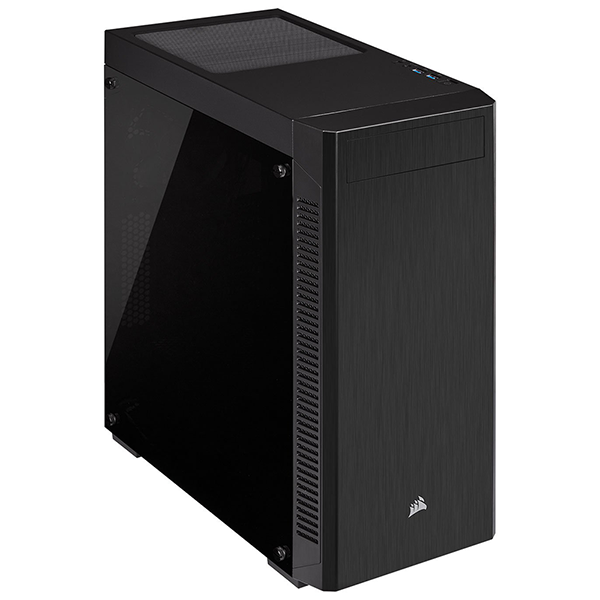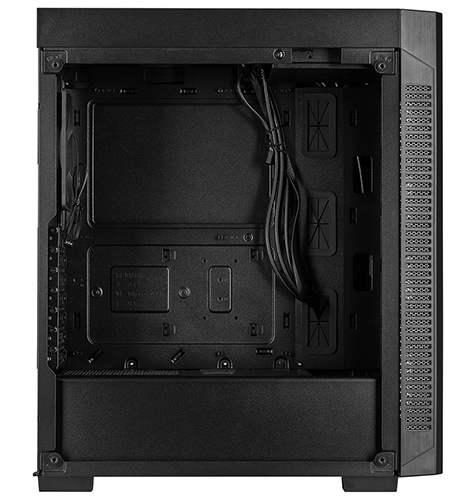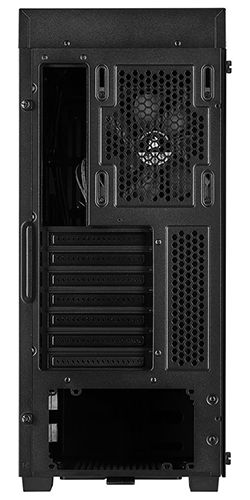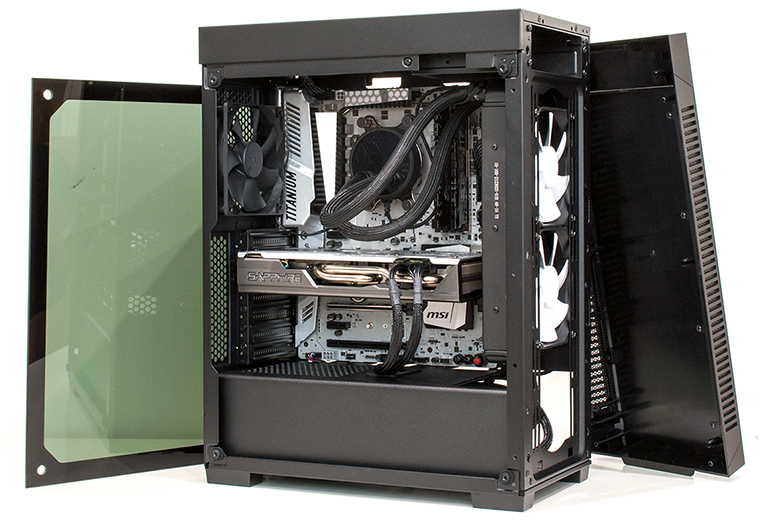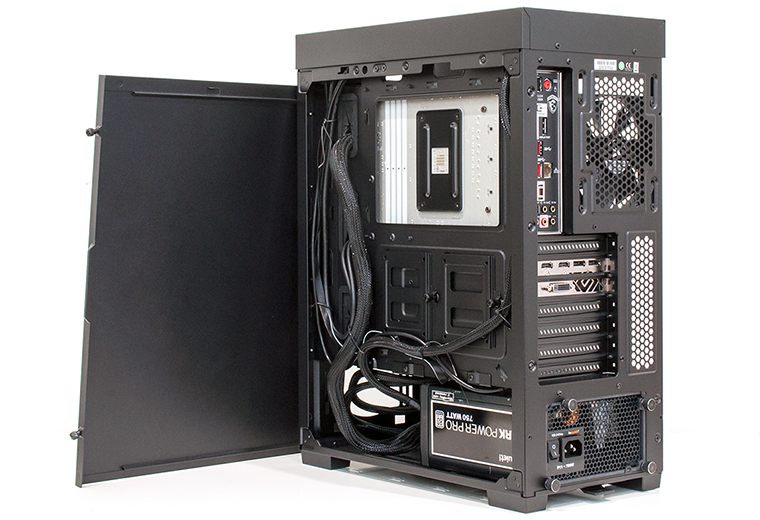Introduction
Corsair is expanding its vast range of PC enclosures with a new entry-level solution. Having moved away from its previous Carbide, Graphite and Obsidian Series naming structures, the latest addition will be known simply as 110R and, more importantly, arrives at retail priced at just £55.
Good news for builders who are hoping to cut costs in certain areas, as the 110R could turn out to be the single-most affordable component in a 2019 build. Of course, savings are typically reflected in the loss of certain features, so what concessions does the new baby Corsair make in order to meet the attractive price point?
Well, from the outside, the 110R is a somewhat basic-looking piece of kit. Take away the 4mm tempered glass side panel and you could quite easily mistake the case as something from the '90s. The number of visible seams and plastic fascia give the exterior a plain outlook, however dimensions of 418mm x 210mm x 480mm are reasonably petite for an ATX solution, and behind the plastic front, the steel frame feels reassuringly solid throughout.
As you might expect from an entry-level solution, Corsair restricts the top I/O panel to power, reset, dual USB 3.2 Gen 1 and a combination audio jack. The addition of USB-C could have helped the 110R truly stand out from the pack, but it isn't a feature we expect on a £55 case in 2019, and our only complaint in terms of connectivity is the alignment of the ports along the top-right edge. We'd prefer the I/O ports to be positioned centrally above the 5.25in optical drive (remember those?).
We quite like the fact that Corsair has included a 5.25in bay as standard, though that decision has resulted in the 110R featuring a rather large head. The space above the tempered glass panel is considerably taller than the space below, giving the case a somewhat imbalanced shape. It ain't a looker, but the interior ticks most of the relevant boxes for a potent but low-cost build.
A trio of rubber-grommeted cable holes sit neatly alongside the motherboard tray, there's another in the roof of the full-size PSU shroud, and component compatibility is decent. The 110R provides 160mm CPU cooler clearance, support for graphics cards measuring 330mm in length, and room for up to a 180mm ATX power supply. Do be aware, however, that a dual-bay 3.5in hard-disk cage is located at the front-end of the PSU shroud and keeping it in situ alongside a large PSU becomes something of a squeeze. We found it made life easier to unscrew and remove the drive cage prior to installing our high-end be quiet! Dark Power Pro 11 supply.
Seven expansion slots are par for the course, as are a pair of 2.5in sleds behind the motherboard tray, and Corsair offers a taste of liquid-cooling potential with support for a 120/140 radiator in the roof, and a 240/280 in the front. The top is lined with a magnetic mesh filter, while the front panel comes away with a sharp tug, and there's a filter directly beneath the PSU that slides out from the back. We do wonder how much airflow the vents either side of the front panel will allow, and if you're serious about cooling you'll need to explore optional solutions as the 110R ships with only a single fan; a three-pin 120mm exhaust.
One benefit of an entry-level chassis is that there tends to be very little fuss. You don't need a SATA power cable to drive any superfluous features, there are no gaudy RGB lights to speak of, and building into the enclosure takes little time or effort. Our AMD Ryzen 7 test platform has gone in with ease, and to our pleasant surprise, the 110R doesn't look too shabby when kitted out. The PSU shroud does a fine job of keeping clutter out of view and there are plenty of tie-down points around back to route cables to your liking.
Creating a tidy finish is no bother, though if you are keen to show off your hardware, do be aware that the side window is heavily tinted, so you'll need to consider illuminated components if they're to be easily seen. That brings us neatly onto the 110Q. Corsair's sibling to the 110R is due to arrive at retail in the coming weeks at the same £55 price point and swaps the side window for a solid panel, while adding sound-dampening material to the front, top and sides.
Unless you're a stickler for tempered glass, we reckon the 110Q is the better bet for most, and given that we're big fans of quiet PCs, it is nice to see a quiet chassis at the entry-level end of the market. Getting back to the 110R in question, let's run the benchmarks before reaching a conclusion.



